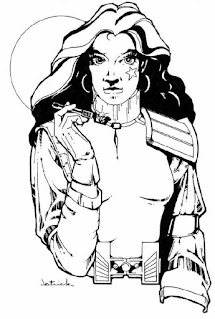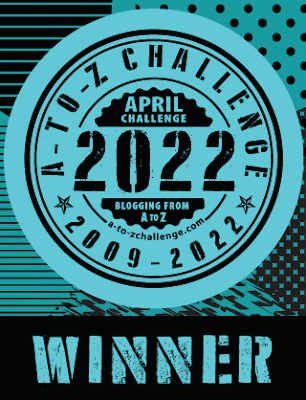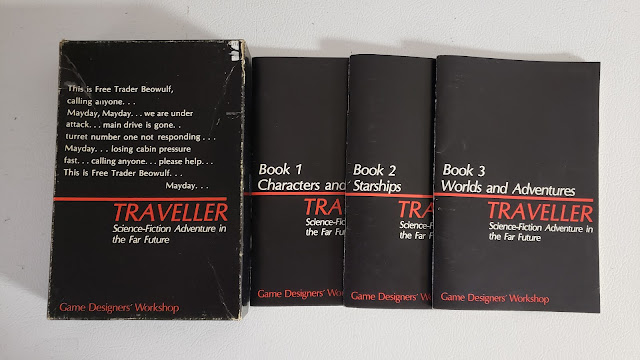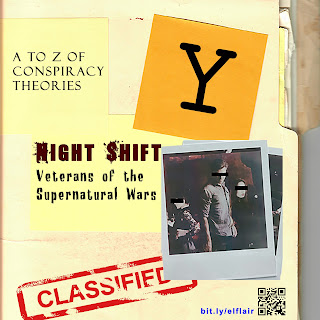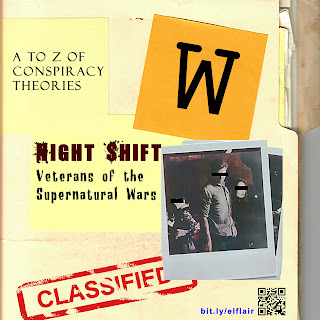Hostile Mechanics
 Hostile is a gritty, near future roleplaying game inspired by the Blue-Collar Science Fiction of films such as Alien, Bladerunner, and Outland. It is a future in which space exploration and colonisation is difficult, harsh, and dangerous, but in which there are asteroid systems and worlds to be exploited and great profits to be made. Conflict is not unknown—between colonies, between colonies and corporations, between corporations, and when that gets too much the Interstellar Commerce Organisation steps in or peacekeepers such as the United States Marine Corps are sent in, but in the main, space is a working environment. One with numerous hazards—the vacuum of space, radiation, adversely high and low temperatures, poisonous planetary atmospheres, potential insanity from being exposed to hyperspace, and strange alien creatures which see you as intruder, food, or incubation for its brood—which humanity must cope with in addition to the stresses of space travel and working away from Earth.
Hostile is a gritty, near future roleplaying game inspired by the Blue-Collar Science Fiction of films such as Alien, Bladerunner, and Outland. It is a future in which space exploration and colonisation is difficult, harsh, and dangerous, but in which there are asteroid systems and worlds to be exploited and great profits to be made. Conflict is not unknown—between colonies, between colonies and corporations, between corporations, and when that gets too much the Interstellar Commerce Organisation steps in or peacekeepers such as the United States Marine Corps are sent in, but in the main, space is a working environment. One with numerous hazards—the vacuum of space, radiation, adversely high and low temperatures, poisonous planetary atmospheres, potential insanity from being exposed to hyperspace, and strange alien creatures which see you as intruder, food, or incubation for its brood—which humanity must cope with in addition to the stresses of space travel and working away from Earth.Published by Zozer Games, Hostile is derived from Samardan Press’ Cepheus Engine System Reference Document, the Classic Era Science Fiction 2D6-Based Open Gaming System based on Traveller. It is a standalone game system and setting which is divided into two volumes, Hostile Rules and Hostile Setting. To encompass the military Science Fiction aspect the setting—obviously inspired by Aliens—Hostile encompasses the squad level combat rules from Modern War, but that is only one option of play explored in Hostile Rules. In total, Hostile Rules covers the task resolution mechanics, character creation, survival rules, stress and panic rules, starship and ground combat, starship operations, creating worlds, trade and salvage, encounter tables, and more. What Hostile Rules does not do is provide an actual setting, although that is either referred to or inferred to throughout its pages, for typical wages and costs of items and services in 2250, as well as the licences and qualifications associated with the roleplaying game’s skills, both in the military and out.
Hostile Rules is itself not entirely complete and is not a standalone rulebook. Most obviously, there are no weapon stats given in the combat sections of Hostile Rules—that is saved for Hostile Setting.
The fundamentals of Hostile will be familiar to Referees and players of Traveller. The core mechanic consists of two-sided dice rolled against a target of eight or more, to which are added stat-derived modifiers; characters tend to be older, having gone through several four-year terms of service in a career and may suffer the effects of aging; in combat, damage is taken directly by a character’s three physical attributes—Strength, Dexterity, and Endurance; and starship travel is measured in the number of parsecs travelled. In flavour and feel though, Hostile Rules is very different to Traveller, being grim and gritty near future Science Fiction as opposed to the far future Imperial Science Fiction of Traveller.
Hostile Rules begins by explaining its core mechanic. To the standard skill role, it explains the perception roll and the characteristic roll, all done in a couple of pages, or so. It also discusses the types of campaigns which it can be used to run. These are typically built around particular crew types, including colony work crews, corporate investigation teams, roughneck crews, commercial starship crews, marine corps squads, private military contractors, and more. Then it explains character creation, with options for designed rather than random creation. Although the setting of Hostile is humanocentric, it includes options for the genetically engineered Android and Prole, but neither are intended as options for Player Characters. Proles are needy and introverted with a four-year lifespan, whilst Androids are passive and non-aggressive, and the designers advise the Referee to be careful before allowing an Android with ‘broken programming’ in play.
A character in Hostile is defined by six characteristics—Strength, Dexterity, Endurance, Intellect, Education, and Social Standing—each rolled on two six-sided dice and expressed as line of numbers and letters called UPP or Universal Personality Profile. A Player Character’s homeworld provides some base skills at level zero, with career options including Corporate Agent, Corporate Executive, Colonist, Commercial Spacer, Marine, Marshal, Military Spacer, Physician, Ranger, Roughneck, Scientist, Survey Scout, and Technician. The Android Career is included for NPCs. Then a player rolls for the character’s Career, term by term, with mustering benefits at the end. In addition, Hostile Rules adds tables for his appearance, height, weight, psych evaluation, reason for leaving Earth, suit badges, and more. This nicely adds flavour and detail. All of the details for each Career is neatly contained on the single page.
Chandra Pham is from Singapore on Earth and signed on with Kuorox Interplanetary as a crewhand and for the last two decades has risen through the ranks, qualifying as a senior broker before being appointed captain of the Blue Hildegard. Two years ago, the Blue Hildegard was hijacked following a gun battle in which numerous members of the crew and hijackers were killed. Captain Pham managed to lead an escape attempt and overpower the hijacker, but was badly injured during the incident, losing her right eye. Although an ICO Court of Inquiry exonerated her, it pointed to lax Kuorox Interplanetary operating procedures which enabled the hijacking. Chandra Pham was let go by Chandra Pham, but received Star Envoy Club Membership as a reward and is currently looking for an independent berth or opportunities to trade.
Senior Captain Chandra Pham, Age 38
Homeworld: Earth
Height: 159 cm Weight: 64 kg
Psych Evaluation: Selfish (Concerned with reward and compensation)
Reason for Leaving Earth: Caught up in political turmoil
Distinctive Feature: Shades
Qualifications: Commercial Brokerage Licence, ICO Sensor & Signals Licence, ICO Cargo Loader Licence, ICO Space Transportation Licence, UASL Pressure Suit Handling Licence
578C86
Commercial Spacer (5 Terms)
Brawling-0, Broker-4, Carousing-0, Comms-1, Computer-1, Ground Vehicle-0, Gun Combat-1, Loader-1, Navigation-1, Pilot-2, Streetwise-0, Vacc Suit-1
Cr. 20,000
Star Envoy Club Membership
As well as providing rules for a multitude of environmental hazards, from acid, hiking, and diseases to arctic and desert, pressure loss, and hunger, Hostile Rules includes rules for stress and panic. This can occur when a starship or vacc suit takes damage for the first time, suffering damage to reduce an attribute to half or more, losing control during a spacewalk, and more. This is a standard Intelligence roll and if failed, the Player Character temporarily loses a point of Intelligence, potentially making further Stress checks harder to pass. If a Player Character’s Intelligence is reduced to half or zero in this way, a Panic Check is made and if failed, he will act accordingly to a roll on the Panic Effects table. In general, this favours Player Characters who have a high Intelligence, but there is a spiral loss, at least temporarily, to Stress checks from any lost Intelligence and of course, scope to roleplay a character’s response.
The combat rules cover everything from personal combat all the up to vehicular combat. This includes blind, area, and frenzy fire, calling for fire support, handling NPCs, the scale between man portable and vehicular weapons, and more. Space combat is also covered, but in some ways, the chapter on starship is actually more interesting, getting right down into the nitty gritty of details such refueling, loading and unloading, fight and hyperspace, landing, and more. What this impresses upon the reader is that Hostile is not setting in which a starship necessarily takes off, travels, and lands somewhere. This all takes effort and work upon the part of the crew, and whilst it need not be played out each and every time, it should be done at least once, if not twice, to reinforce the nature of space travel. One aspect which is like Traveller in the Hostile Rules is that travel in hyperspace is done outside of star systems and two aspects in which it is not, is that hyperspace travel is done in hypersleep and that starships can travel for more than week. Which means that a starship capable of travelling three parsecs per week would cover that distance in a week, a shop capable of only traveling one per week, would take three. One pleasing genre enforcing element is that commercial starship crews make most of their money through bonuses, not base pay, so Player Characters get to gripe about their bonus!
Hostile Rules also goes in quite details about worlds and world data, especially its physical characteristics. There are rules here for creating worlds, adding trade classifications and bases, and more, although there is no checklist, so it does look as if they are not actually there! As with the small arms, actual world data for individual colonies and settlements within the setting are saved for Hostile Setting. There are rules for trade though, and salvage.
Hostile Rules is rounded off with a lengthy set of encounter tables and advice for the Referee. The encounter tables handle everything from Space Encounters and Starport Encounters to Colony Encounters and Patron Encounters, as rules for handling interaction between the Player Characters and the NPCs. It also includes tables and guidance for Animal Encounters, including creating them, though this does not extend as far as Exomorphs—or Alien Horrors! There is a nice little essay here on making them interesting and different to that of the Xenomorphs, the obvious inspiration for Hostile. It only runs to a couple of pages, so it is a pity that it could not be longer, but unlike the other animals, there are no tables to help the Referee create her own, though there are plenty of ideas included to make encounters with them different and challenging.
The advice for the Referee is excellent, covering campaign types—the fact that the different crew types allow for a range of Player Character types, adjudicating the rules, how to create scenarios, including a example inspired by a horror film, how to prepare so that you can improvise better, and finally, run campaigns. The latter feels shorter and less useful than the rest, but overall, this is all helpful advice.
Physically, Hostile Rules is serviceably done. The artwork is excellent, capturing very much the grim and gritty feel of space being a working environment. One noticeable design feature is the text size, which although sans serif, is large. Hostile Rules could have easily been a shorter book with a smaller sized typeface, but the larger size is very easy to read.
The absence of weapons is the biggest issue with Hostile Rules. It is obvious why it lack them—Hostile Rules and Hostile Setting are designed to complement each other. However, with the addition of weapons stats, Hostile Rules would all be a standalone set of roleplaying rules.
The contents of Hostile Rules will feel familiar to anyone who played or read either Traveller or Cepheus, but very much filtered through not one, but three different Science Fiction subgenres—Blue Collar Science Fiction, Horror Science Fiction, and Military Science Fiction—and combined into one heavily implied setting with obvious inspirations. Bar the absence of weapons, Hostile Rules does very much feel like a Cepheus Engine version of Alien and Aliens, minus the Xenomorphs. This is not to say that this is a bad thing, but like the Aliens Universe, and even more so with Hostile there are numerous tales to be told which do involve conflict and exploration and strangeness without encountering a Xenomorph, or in this case, an Exomorph. Although Hostile Rules includes rules for Exomorphs and a Referee can run games involving them, they are not its focus as they are in Free League Publishing’s Alien: The Roleplaying Game. Plus, of course, Hostile already has enough elements within it that are trying to kill the Player Characters.
Although not complete, Hostile Rules is an engagingly accessible set of rules and mechanics which serve to make space and the frontier a dangerous place to be, let alone work. In combination with Hostile Setting it will provided a solid, detailed design, both in terms of the rules and the grim and gritty future.




